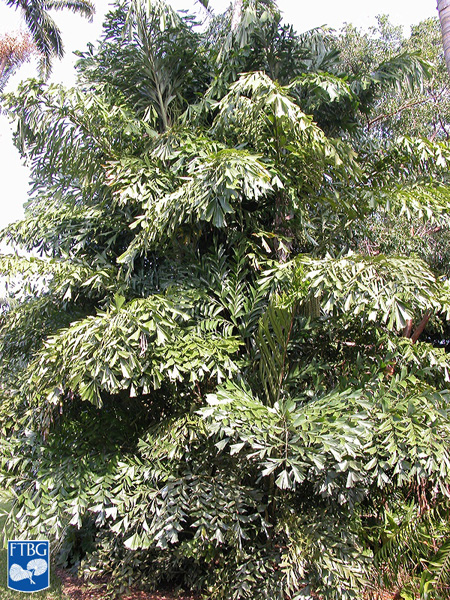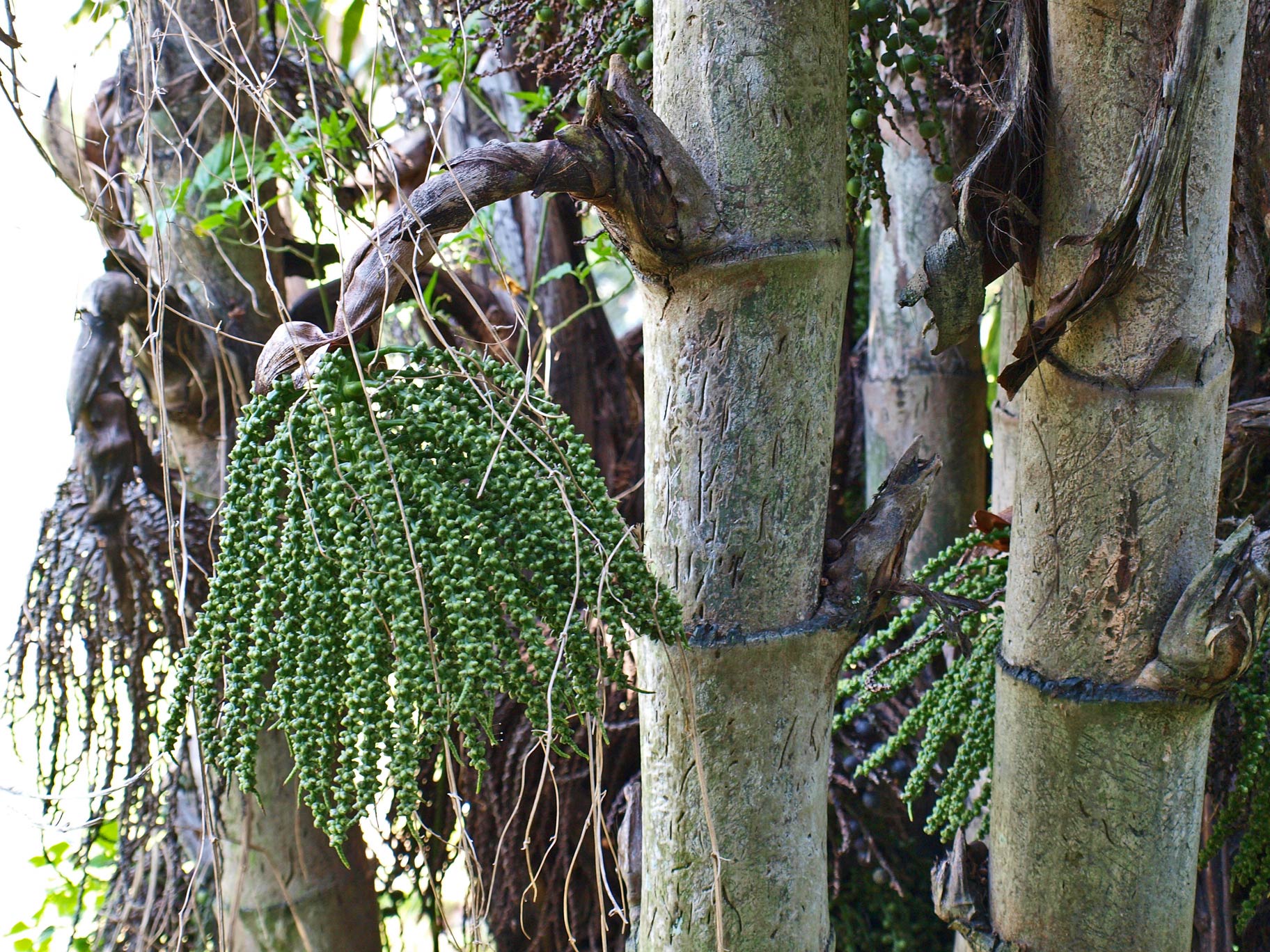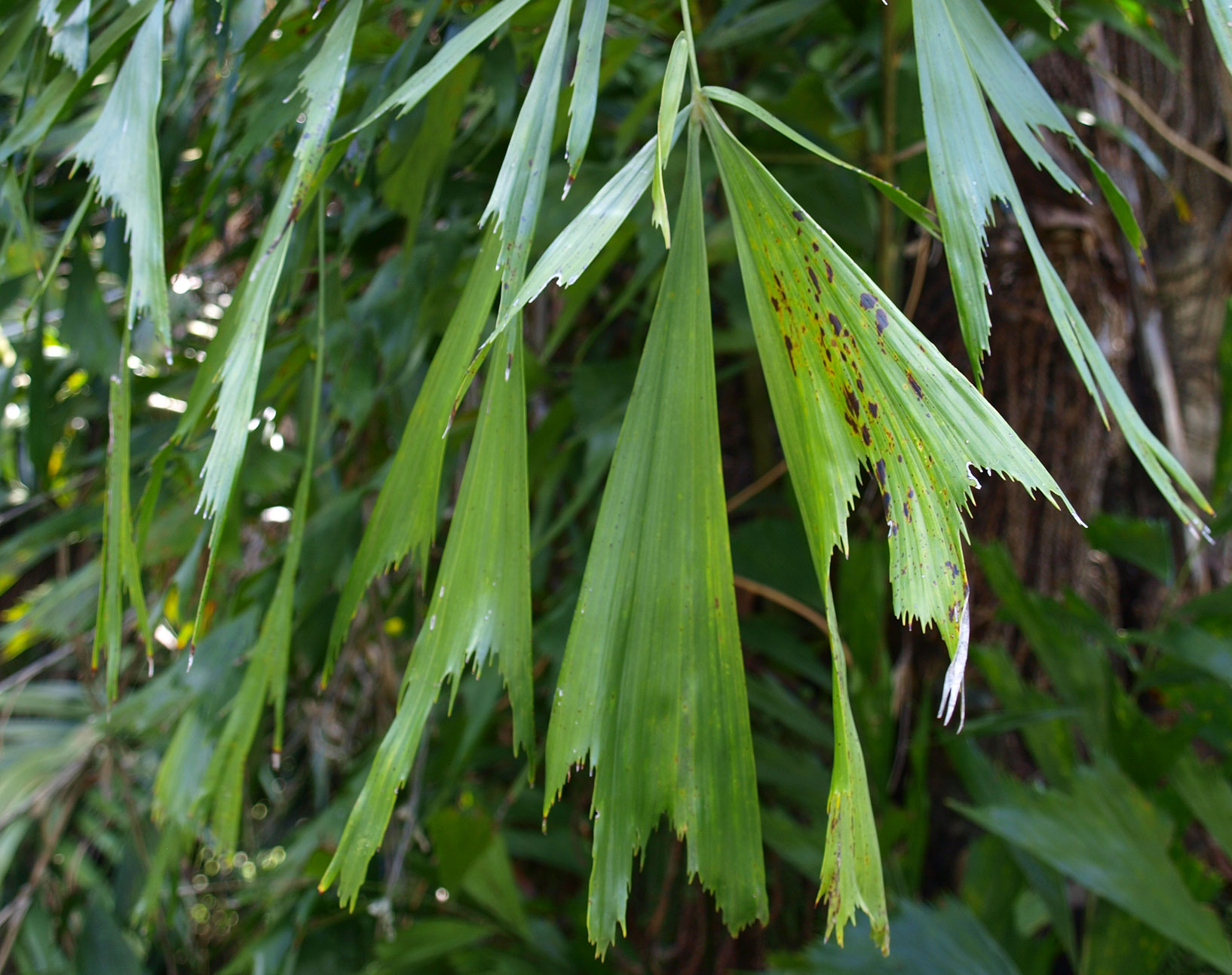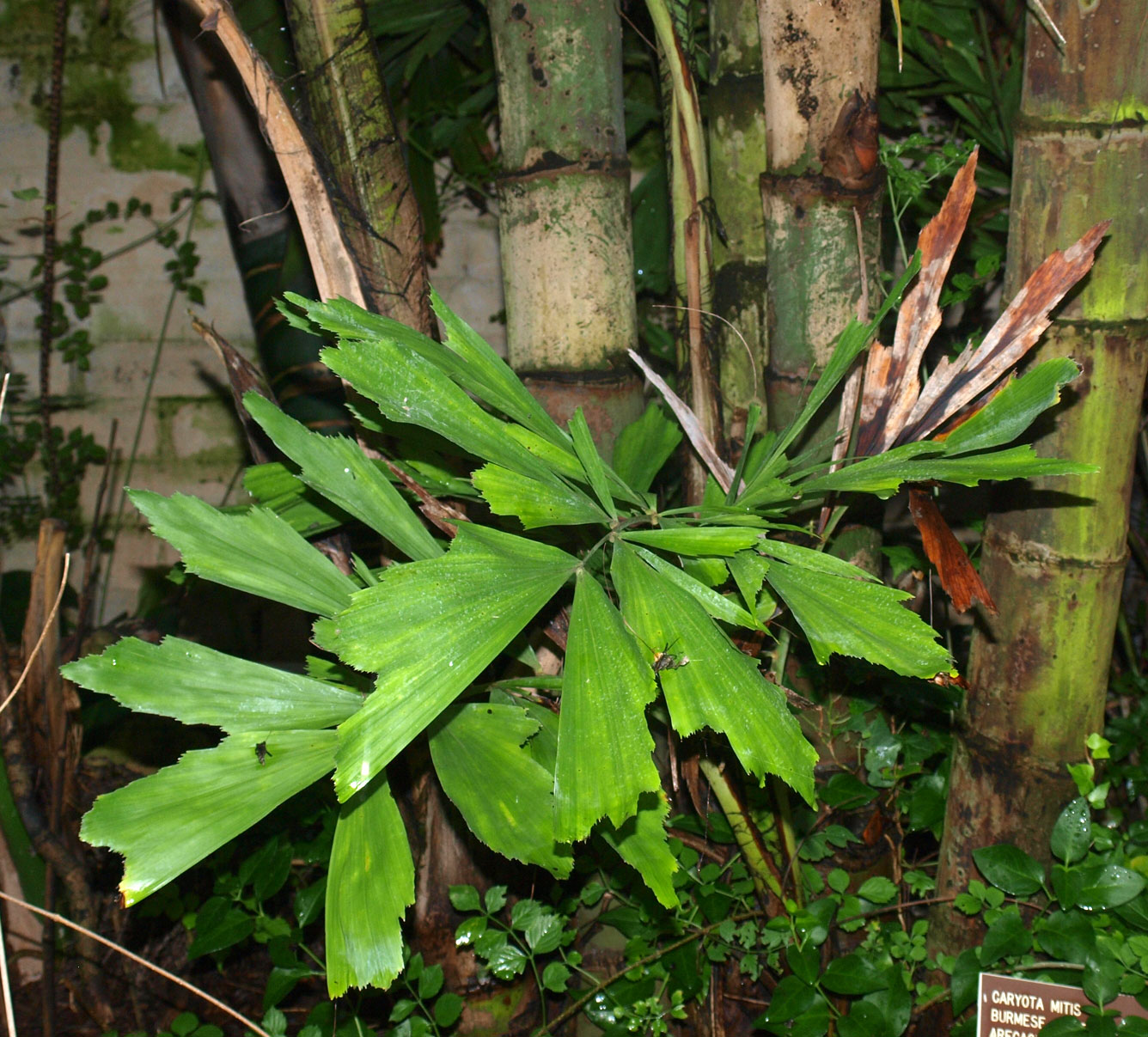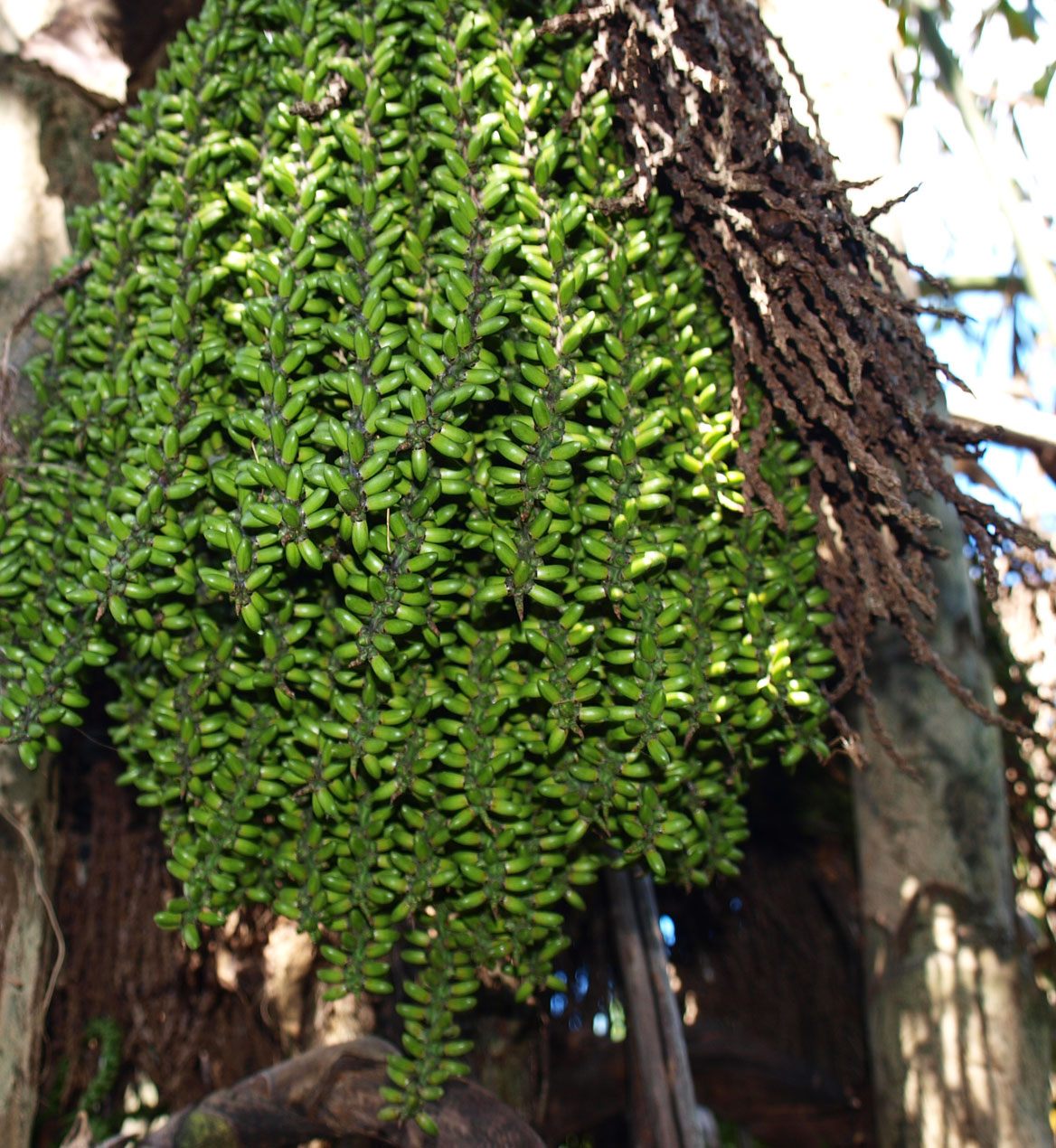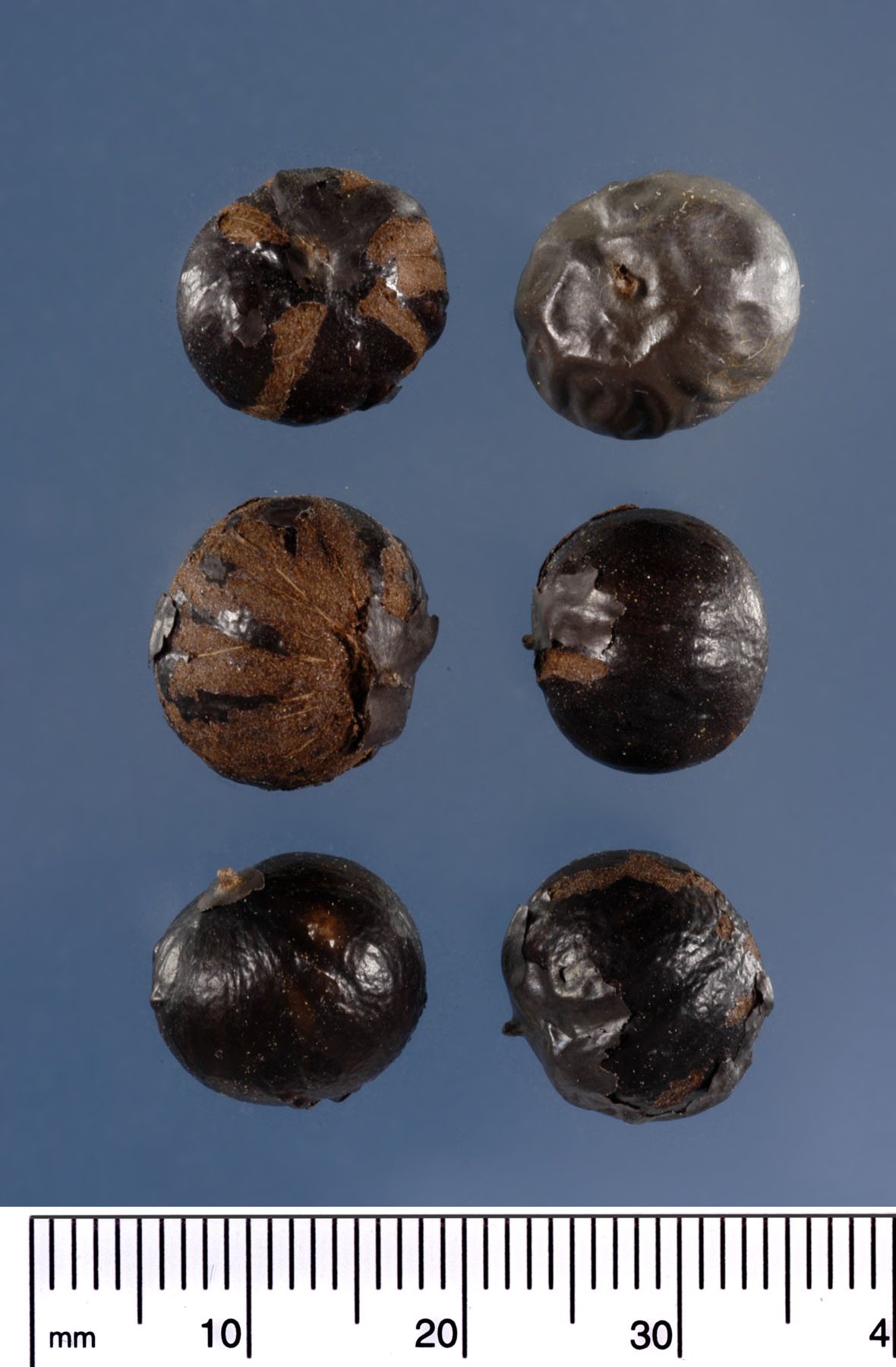Caryota mitis
|
Caryota mitis habit. Photograph courtesy of Fairchild Tropical Botanical Garden, Guide to Palms http://palmguide.org/index.php |
|
Caryota mitis stem with leaf scars and unripe fruit |
|
Caryota mitis adult leaflets |
|
Caryota mitis juvenile leaf |
|
Caryota mitis fruit |
|
Caryota mitis seeds. Photograph courtesy of Mariana P. Beckman, DPI |
Common name
clustering fishtailfishtail:
leaflet shape of some palms appearing like a fish tail, or as if a bite has been taken out of the leaflet, eg. <em>Caryota</em> (see praemorse)
palm
Description
Stem: Clustering, upright, to 7-10 m tall and 12-15 cm in diameter, older palms ringed with slender, widely-spaced leafleaf:
in palms -- the leaf blade (which is usually divided into leaflets or leaf segments), the petiole (or leaf stalk) and the sheath (which forms the attachment of the leaf to the stem)
scars. Leaves: Bipinnate, induplicateinduplicate:
Most palm leaflets or leaf segments are obviously folded. If the folds create a V-shape, with the midrib lower than the margins (so that rain might fall "into a valley"), the folding is induplicate.
, to 7 m long, with dull green, pendulous leaflets growing in one plane. The leaflets are obdeltoid and praemorsepraemorse:
with a jagged edge or like a fish tail
. Flowers and fruit: Inflorescences are up to 0.5 m long with many pendant branches with staminatestaminate:
a flower bearing stamens but no pistils; a “male” flower
and pistillatepistillate:
a flower bearing a pistil but no stamens; a “female” flower
flowers on the same inflorescenceinflorescence:
the reproductive structure of a flowering plant, including palms, consisting of flowers and associated bracts
. Fruits are up to 2.5 cm long and red-orange to black when ripe.
Diagnostic features
Clustering palms with bipinnatebipinnate:
doubly pinnate
, praemorsepraemorse:
with a jagged edge or like a fish tail
leaflets
May be confused with
Caryota maxima, but C. maxima is a solitary, single stem palm that ultimately reaches a much greater height
Distribution
Native to India through Southeast Asia to Java and the Philippines
Additional comments
Extreme care is required when handling the fruits, in which calcium oxylate crystals are found.
Individual stems of this palm produce inflorescences from the highest to the lowest node (leaf scar ring) that then mature from the top down. Then the stem dies, but other stems in this clustering palm continue, producing inflorescences and dying in turn.
Scientific name
Caryota mitis Lour.
Family
Arecaceae/Palmae
Synonyms
Caryota furfuracea Blume
Caryota griffithii Becc.
Caryota javanica Zipp. ex Miq.
Caryota propinqua Blume
Caryota sobolifera Wall.
Caryota urens Jacq.


